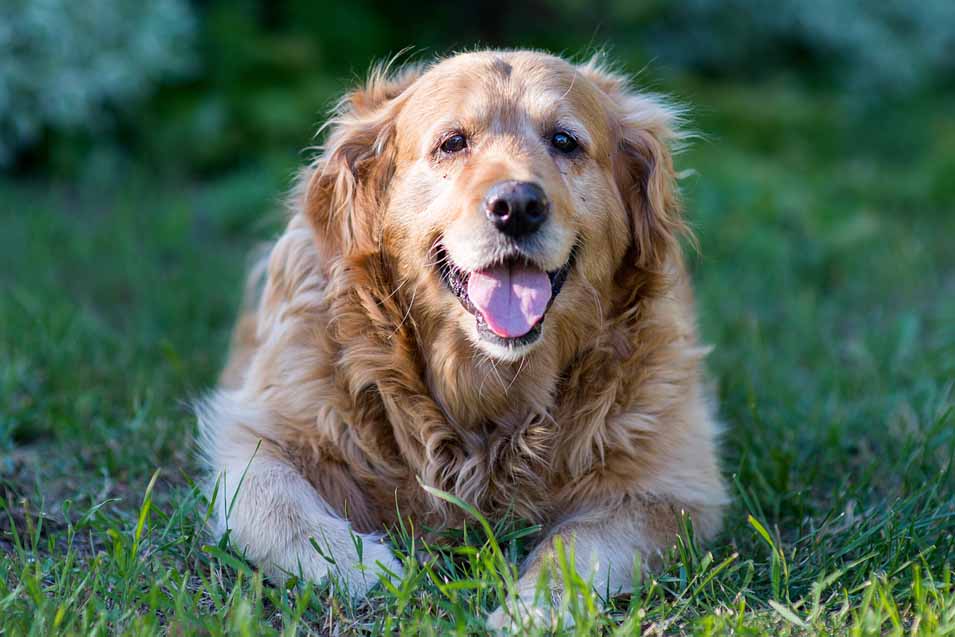Osteoarthritis is one of the most common conditions diagnosed in dogs, particularly senior ones. Large breeds are affected, too, and there are certain genetic predispositions that we will discuss below.
In today’s article, we are looking at everything you should know about canine osteoarthritis – from its risk factors to its symptoms and whether or not there are any options in terms of therapy.
Osteoarthritis in Dogs – The Basics
This health issue shows up in almost a quarter of all dogs. While any pooch can develop it, it is more common in geriatric animals and those with a number of other risk factors, such as obesity, injuries, and inadequate nutrition.
The vast majority of the cases that are diagnosed in animal hospitals these days are secondary, not primary. In other words, osteoarthritis is a consequence of other health conditions, such as hip or elbow dysplasia, patellar luxation, or cranial cruciate ligament disease.
There is a share of dogs where osteoarthritis is the primary disease, which doesn’t appear to be caused by anything other than age.
These dogs have a genetic predisposition to developing osteoarthritis. Here are a few examples of such breeds:
- Golden retriever
- Labrador retriever
- German shepherd
- Rottweiler
- Border collie
- Boxer
The prevalence of this disease is lower in other breeds, but some are still genetically likely to develop it – they just have a lower chance. For example, a lower incidence appears in dog breeds such as the West Highland Terrier, Cavalier King Charles Spaniel, Staffordshire, Bull Terrier, and Yorkshire Terrier.
Canine Osteoarthritis – Staging
The symptoms of this condition largely differ from one dog to the next depending on the progression of the disease. For example, in the first two stages, osteoarthritis might go unnoticed by pet owners and therefore, might be undiagnosed for a longer amount of time.
Stage 2 causes mild loss of fitness and strength and occasional acute joint pain. Stage 3 is much easier to notice since it causes more severe clinical signs in the form of chronic pain and a significant reluctance to exercise.
In the stage 4 of osteoarthritis, most dogs lose their ability to walk, let alone engage in any type of fitness. These patients lose their strength gradually, and their affected joints experience a loss or decrease of mobility.
Early diagnosis is the key when it comes to ensuring that the affected dog continues to benefit from the same or a similar quality of life. You should take your pet to the animal clinic for check-ups once or twice a year and ask your vet to screen your pooch for osteoarthritis if they are older than 7 years of age.
Symptoms of Osteoarthritis in Dogs
We have already mentioned some signs that dogs can exhibit depending on the stage of osteoarthritis they have reached. However, here are some other clinical signs that you might notice in a dog suffering from this condition:
- Lameness
- Weight gain
- Behavioral changes (being withdrawn or hiding when being called to go out for a walk)
- Pain in certain body regions
- Changes in the body positions your dog normally has when ‘going to the bathroom’
- Muscle mass loss
If you notice any of these signs and your dog is either a member of one of the breeds we have mentioned or they are considered a senior, take them to the animal hospital as soon as possible.
Diagnosis
There are several diagnostic tests that can be used to tell whether a dog has osteoarthritis or not. The first is a standard physical examination, which can reveal that the patient is in pain, especially whenever any amount of pressure is being put on their joints.
The second and one of the most revealing types of tests that a veterinarian can use to diagnose osteoarthritis is a classic X-ray. Although it is considered a somewhat limited imaging diagnostic method, an X-ray can show at least some amount of bone and joint changes.
However, any modifications pertaining to the local soft tissues will have to be revealed using other imaging methods, such as CT or MRI. These two can show more information on the structure of the soft tissues in the joint or detailed bone changes (particularly in areas such as the dog’s elbow or ankles).
Treatment and Management of Canine Osteoarthritis
The therapy depends on the staging and severity of the disease and the symptoms that it causes. Surgical management could be a way of treating this condition, especially when it is caused by other health complications (such as cranial cruciate ligament rupture).
For cases where osteoarthritis is the primary disease, a combination of several management methods seems to work best. This is a degenerative disease, which means that unless the joint can be operated, you will have to do your best at maintaining your dog’s quality of life.
Anti-inflammatory drugs, rehabilitation in the form of motion exercises or aqua therapy, as well as joint health supplements can all make a difference in terms of lowering your dog’s pain levels.
There are other, practical things that you can do at home to improve your dog’s condition. You can give them a warm bath once every two-three days with soothing salts, for the pain. You can change their food and water bowls and get a system that doesn’t force them to bend down each time they want to eat.
Depending on the lesions your dog has, they might benefit from spending their time on a heated pet bed. Taking your dog indoors if they’ve lived in the yard for most of their life can be another solution.
Final thoughts
Even though osteoarthritis is a painful disease, with the right changes, it can be managed. It can be somewhat prevented in young dogs by making sure that they experience normal bone growth (by adding mineral supplements to their diet especially during the first 18 months of their life) or by preventing them from gaining excess weight.






